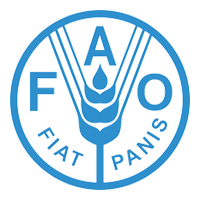Inclusive Innovation: Definition, Conceptualisation and Future Research Priorities
There is increasing policy, practice and academic interest in “inclusive innovation”. In simple terms, this is the means by which new goods and services are developed for and/or by those who have been excluded from the development mainstream; particularly the billions living on lowest incomes. However, there are many competing perspectives on inclusive innovation, which this paper resolves into an integrated ‘ladder’ model of different levels of inclusive innovation. Research has so far lagged practice and there is need for a more concerted effort at knowledge-building for inclusive innovation. Based on a three-country interview study with 37 policy-makers, strategists, private sector and NGO sector representatives – and founded on a review of existing literature on inclusive innovation – this paper reports findings about research priorities in inclusive innovation. Respondents identified a set of eleven priority research topics, which are categorised as stakeholder-, systemic- or process-oriented. These priorities provide evidence-based guidance for future research on inclusive innovation.
Related Resources

FAO Good Learning Practices For Effective Capacity Development (Learning module 3)
This Module is the third in a series of four that address capacity development competencies in FAO. It is intended to enhance FAO’s practices in designing, developing, delivering and evaluating its activities in support of learning in Member Countries, while...
Global Value Chains Meet Innovation Systems: Are there Learning Opportunities for Developing Countries?
Analysis of the role of Global Value Chains (GVC) in accessing knowledge and enhancing learning and innovation. Global Value Chains, Innovation Systems, Governance, Foreign Direct Investment, Learning, Upgrading, Productivity. Three main conclusions emerge from the analytical framework and evidence presented...
Landscape level characterization of seasonal floodplains under community based aquaculture: illustrating a case of the Ganges and the Mekong Delta
This working paper represents work‐in‐progress of the CBFC project (Community‐based Fish Culture in Seasonal Floodplains and Irrigation Systems), a research project supported by the Challenge Program on Water and Food (CPWF), with the aim of increasing productivity of seasonally occurring water bodies through aquaculture.The...
The Role of Agricultural R&D Within the Agricultural Innovation Systems Framework
This paper traces the evolution of the innovation systems framework within the agricultural sector in Sub-Saharan Africa, and presents a conceptual framework for agricultural innovation systems. The difference between innovation ecology/ecosystems and intervention-based innovations systems is highlighted, given that these...
Institutional Assessment and Capacity Development: Why, what and how?
This note offers a conceptual framework for dealing with 1) institutional and capacity assessment; and 2) capacity development issues, mainly in the public sector areas. This framework will be particularly useful in the in the preparation of support to sector...


